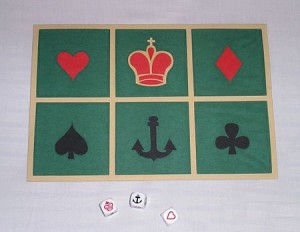I assume that all my regular readers picked up on the fact that I’ve been walking through the Joni discography album by album, chronologically (as is my wont): SoTW 106, ‘Cactus Tree’, 259: ‘Marcie’(from her first album); 141, ‘I Don’t Know Where I Stand’ (“Clouds”); 163, ‘For Free’, 177, ‘Woodstock’ and 286, ‘The Circle Game’ (“Ladies of the Canyon”). Y’all know what the fourth album is. Hence the hesitation. [Foreshadowing: 222, ‘River’ (“Blue); 277, ‘Electricity’ (“For the Roses”); 260, ‘Yvette in English’, (“Turbulent Indigo”)]
The album “Blue” (1971) is daunting. The New York Times chose it as one of the 25 turning points and pinnacles in 20th-century popular music. In 1999 it was granted a Grammy Hall of Fame award. It’s everyone’s “Greatest Relationship Album”. What do I have to add? But it’s next on the list, and just as Dr. Johnson didn’t miss touching a single fencepost, so will Jeff not flinch from a challenge.
The song ‘Blue’ reminds me of Suzie C., the stunning blonde from my high school class, who was actually a very sweet girl but was left dateless for the senior prom because everyone was afraid to ask her out. The unapproachable. No one wants to deal with it head-on. It’s so much easier to chart and plot the (albeit transparent) biographical details, to talk about her breakup with James Taylor and his habit, than to deal with the song as a work of art, mano a mano.
 Made the mistake with Suzie, ain’t gonna do it again. Besides, I’m not really worried that Joni will say ‘no’. So let us roll up our sleeves, gird our loins, and join a combat of love with the title song of one of the cultural icons of my generation.
Made the mistake with Suzie, ain’t gonna do it again. Besides, I’m not really worried that Joni will say ‘no’. So let us roll up our sleeves, gird our loins, and join a combat of love with the title song of one of the cultural icons of my generation.
I’ve read a couple of biographies of Joni recently. (I tend to read mostly musical biographies these days.) One had a beautiful cover and a vacuum within that made me cry for the tree that sacrificed its life in the book’s manufacture. The other had a pretty hideous cover but lots of very convincing facts about who walked in on whom sleeping with whom and as a result wrote a song that topped the Hit Parade.
I can’t retain all those details, and I readily admit that there are armies of kids brighter and fresher and boreder than me who know the details of Joni’s life better than I remember my own. So I’m going to hark back to a trick I learned in college.
I had to pick a major. None of the subjects I was interested in (girls, sleep, Beatles, girls, marijuana, Hitchcock, girls, beer, Dylan, in approximately that order) was offered. So I chose English Lit. I figured it would be easier to read than to actually study. I quickly learned that Ulysses (either one) and Tristram Shandy were more like driving a forklift than watching Dobie Gillis. So I specialized in poetry. Do you know how much less time it takes to read a sonnet than an epic? Freeing up the rest of the night for [enter item from list above].
But some of that poetry was really hard. Beowulf and Paradise Lost and all that? Forget it. So I sub-sub-specialized in Modern American and British poetry. That’s where I met Yeats and Auden and Frost and Eliot and Pound. They were okay, if class didn’t start before 11:00 and the professor talked really slowly. It was there that by some remarkable osmosis, I learned this magnificent trick that has held me in good stead these many years: Close Reading. It’s an approach developed by the New Critics from around the 1930s which has greatly impacted all forms of literary investigation till today: Forget the history surrounding the poem, forget the biography of the poet, forget his other works; just concentrate on the work before you and see if it stands on its own terms.
Or in my interpretation: No homework! Let’s go get a beer!
Well, I’ve mellowed and matured immeasurably since then, but Close Reading still vibrates for me as the legitimate approach to reading a poem. Or examining the lyrics of an iconic Joni Mitchell song.
Joni has said that this song is about her relationship with James Taylor and his relationship with heroin. James has said it. Everyone has said it. If I were a strict adherent of The New Criticism, I’d talk about The Narrator and The Addressee. But I’m not a strict anything, so for the sake of sanity and lucidity, let’s just call them Joni and James.
What do we have here?
- The narrator, Joni
- The addressee, James, but a case could be made to see Blue as blueness, the world of downhood
- The dialog between them
- A shifting collection of sea-related metaphors
- A context for the dialog (stanza 3)
- The narrator’s stated attitude towards and intentions regarding the context (stanza 4).
- A real song (‘Blue’ itself).
Let’s start with stanzas 3, 4 and 5, because they seem to me more straightforward. Stanza 3 is saying many of our/your social group are indulging in profligate behavior (stick in a couple of words like that and you already got yerself a passing grade) which is clearly threatening and likened to waves.
Joni explicitly disapproves of this licentiousness (we’re up to a C with that one), not just the ‘I don’t think so’, but also the ironic, diminishing repetition of ‘lots of laughs’. It’s not funny, she’s saying. Yet despite the inherent dangers, she remains—because she loves him. Will she partake? Or just indulge in voyeurism? ‘I’m gonna take a look around it’ is rather tossed off. The issue of the degree of her involvement or commitment in ‘the scene’ is marginal. The significant point is the art, the foggy lullaby she writes for him.
Joni, after all, is a consummate (C+) artist. Let’s go have a painful experience, maybe we can get a good song out of it. I think that approach is explicitly expressed here. ‘There is your song from me.’ That’s the ultimate point.
What is foggy? The songwriter? The song? The addressee? Well, we know what the song is—it’s this one, ‘Blue’. It’s a shell—organic, found, rather than a work of active creation. A sigh. If I had to try to tie that all together, I’d say her ties to ‘him’ are as natural, inevitable, as the movement of the waves and the sound emanating from the shell. A resigned embrace. She’s unhappy with her love for him, but it’s undeniable. He is her drug. So she cradles him, sings to him, in acceptance of his ultimate absence, his loyalty to that other thing he’s addicted to. We’re left with an image of the Madonna cradling the bleeding Jesus.
Okay, now let’s tackle the first two stanzas, which for me are the outstanding ones of the song, some of the most stunning lyrics she’s written.
What tattoos? A crown and anchor tattoo, the traditional mark of seafarers, based on elements from the C&A dice game played in the British Navy.
But Joni is one humdinger of a wordsmith. Crown and anchor me—tattoo me, but also elevate me and secure me. Like lovers do.
What songs are like crown and anchor tattoos? Well, this one. Because it’s the mark of a seafarer, one who has ‘been to sea before’, one who has traversed the deep and stormy waters of drugs, drink, sex and violence. And it’s her lullaby to him, that which tells of her love, elevates and secures him.
Or let me sail away–either give me ‘love’, with its passion and its security, or let me move on to someone who will do so. But in the end, we see the threat, the complaint isn’t pursued. She capitulates to him quickly. She only gets him in a fog, with his ultimate allegiance to the needle. Still, she cradles him.
And here’s my favorite verse, the one that really bowls me over. Here is a song for you–
 Ink on a pin. My ‘tattooing’ of you is by writing this song with a pin/pen. This is how I mark you, I brand you, I lay a permanent claim over you. But my songs—this song—is no mere ditty. It abides underneath the skin. A Cole Porter cliché? Oh, no, that’s just the starting point. Just as the tattooists pin insinuates ink underneath the skin, so my song will mark you permanently in that most intimate of places. You’re of a particular breed, James, you have an empty space beneath your skin, a hollowness, a void, a place of need. As a sailor needs adventure, as a junkie needs his fix, as a person in a relationship needs to lay claim to his partner (at least for the moment) and to be laid claim to—that’s the place my tattoo/song will occupy in you.
Ink on a pin. My ‘tattooing’ of you is by writing this song with a pin/pen. This is how I mark you, I brand you, I lay a permanent claim over you. But my songs—this song—is no mere ditty. It abides underneath the skin. A Cole Porter cliché? Oh, no, that’s just the starting point. Just as the tattooists pin insinuates ink underneath the skin, so my song will mark you permanently in that most intimate of places. You’re of a particular breed, James, you have an empty space beneath your skin, a hollowness, a void, a place of need. As a sailor needs adventure, as a junkie needs his fix, as a person in a relationship needs to lay claim to his partner (at least for the moment) and to be laid claim to—that’s the place my tattoo/song will occupy in you.
The metaphor is impressive by any standards, in its technical mastery, in its controlled passion, in the ideas it’s presenting.
Joni is a consummate artist. She works at her songs, she crafts them. A metaphor such as this doesn’t plop down out of the sky in a fit of ecstasy. A lot of pieces of crumpled paper were left in its wake. It’s fine, it’s refined, it’s artistry. It’s also passionate and painful. You know what? It really is a great song.
Blue, songs are like tattoos.
You know I’ve been to sea before.
Crown and anchor me
Or let me sail away.
Hey Blue, here is a song for you–
Ink on a pin
Underneath the skin,
An empty space to fill in.
Well there’re so many sinking now
You’ve got to keep thinking
You can make it thru these waves.
Acid, booze, and ass,
Needles, guns, and grass,
Lots of laughs. Lots of laughs.
Everybody’s saying that hell’s the hippest way to go.
Well I don’t think so,
But I’m gonna take a look around it, though.
Blue, I love you.
Blue, here is a shell for you.
Inside you’ll hear a sigh,
A foggy lullaby.
There is your song from me.











Nice examination, Jeff. However from my point of view, some things need no explanation. They just stand on their own. Underneath the skin…… If we dissect too much we limit the absolute universality of it. It remains Joni-to-James, rather then Me-to my world, which makes it so beloved. And although Blue (the song) is a singular beauty, the whole of Blue (the collection), and the song in context, is a work to behold. Thousand of albums, yet this one never seems to get back on the alphabetized shelf. It gets left out. I know I’m going to need it again soon….. Thank you sir for the conversation….
I saw her on Much Music once (Toronto’s MTV) scolding her mother who was presumably out there in TV land. About what?
She insisted that their family had some kind of aboriginal inheritance from Scandinavia. I assumed that this was probably a romantic wish to be exotic or on the side of the underdog.
I remember how disappointed Eva Longorio was when Henry Gates told her that her DNA was mostly white on Who Do You Think You Are?
My introduction to Blue was in my brother’s (ironically) blue VW bug on the drive to high school from an 8 track tape. Anyone old enough would know that you couldn’t necessarily replay one song on an 8 track. The tracks came in lumps of three, so you had to really listen to the album in order. You had to have “Little Green” and “Carey” before you could get back to “Blue”. That wasn’t necessarily a bad thing. Especially in this case. I liked the uptempo songs on the album “Carey” and “This Flight Tonight” and the rest I found brooding and “for girls”. But again I had to hear the song before and after them if I wanted repeats. I think that forced all the songs into my subconsciousness. Not a calm place to live in a 17 year old. My brother offered me two tickets he couldn’t use to see Joni Mitchell at Carnegie Hall. I took a girl I was smitten with, but I fell for Joni. Hard. She sang most of Blue, and out of order! Ha! And was introducing her newer songs which became “For the Roses”. We left Carnegie Hall and it was snowing. Snowing in New York. I would like to admit that I am making this up but I am not. (Embarrassingly sounds like a Tom Hanks and Meg Ryan scene…) However all true. (Nearly forty years later I found a bootleg of that show which was an unexpected surprise.) That was my introduction to the love affair I have had with the music of Joni Mitchell. A nice way to start.
A+.
Lovely story, Kevin.
Here I tell about the one time I saw (and met) Joni.
https://jmeshel.com//106-joni-mitchell-cactus-tree/
I’ve just discovered Joni and am deep diving into her work and this song….well, it just might me my favorite so far.
I love the analogy of leaving a mark on a lover, the ink on a pen underneath the skin…..I hadn’t thought of that and its beautiful. Also, the foggy lullaby is her song to him…just as James refers to his song for Joni, You Can Close Your Eyes with the line ‘You can see this song when I’m gone’ as a ‘lullaby’ – this is her song to him.
This is the saddest, most haunting love song I think I’ve ever heard and I’m old. Loving someone who is lost to you, who is just out of reach, and still you can’t break free.
Damn.
This made me nostalgic. I love Joni, and I think Blue was my favorite of her albums. I must have listened to it hundreds of times. Thanks for the memories.
When you combine the lyrics with the music she set them to, it is a sorrowful, painful expression of her feelings about “Blue”.
I don’t think I’ve ever listened to an album that expressed so much raw emotion as Blue. I can attach a totally different meaning to the phrase “Blue I love you”
Your artistry ain’t so bad, either, Jeff.
I was privileged to see Joni perform 4 or 5 times before she got jazzy, and once after. The first time was at Northwestern U in December ‘67. I had a date with a girl I was very excited about, but as soon as Joni started strumming and rhythmically swaying, I was alone – with her – fully immersed in her sexy/smart/hip/literate/emotionally seductive/heavenly/Joni World. I instantly wanted to have her, be with her forever. Several times I found myself calling out “I love you Joni!”, sitting next to my equally smitten date. And I wasn’t alone in that. Lots of young men and women joined the chorus of the truly smitten that night, as they did every other time I witnessed and succumbed to her stunning artistry.
This essay is perhaps your best ever, Jeff. It shines with insight, wit, understanding, and deep love for the artist and the art. Thank you for that! (Of course now I’ll never be able to write a lyric again).
Thanks.
The one time James Taylor came to Israel, lovely show in an amphi, a girl called out “James, I love you!”, to which he replied, “You might feel differently if you knew me better.”
finally understand crown and anchor thanks never needed tattoos have songs